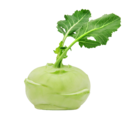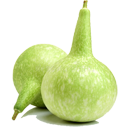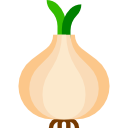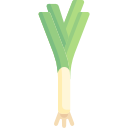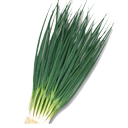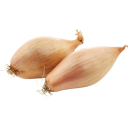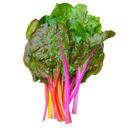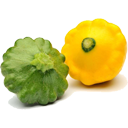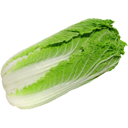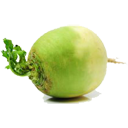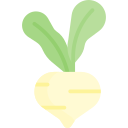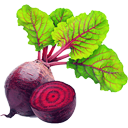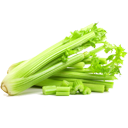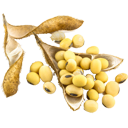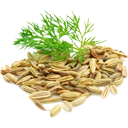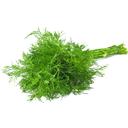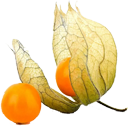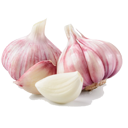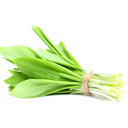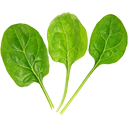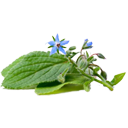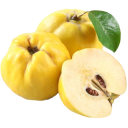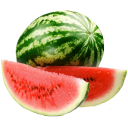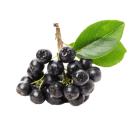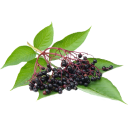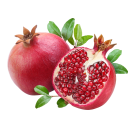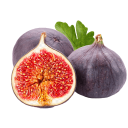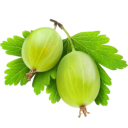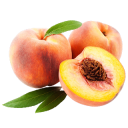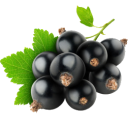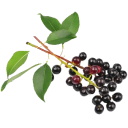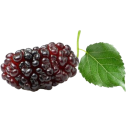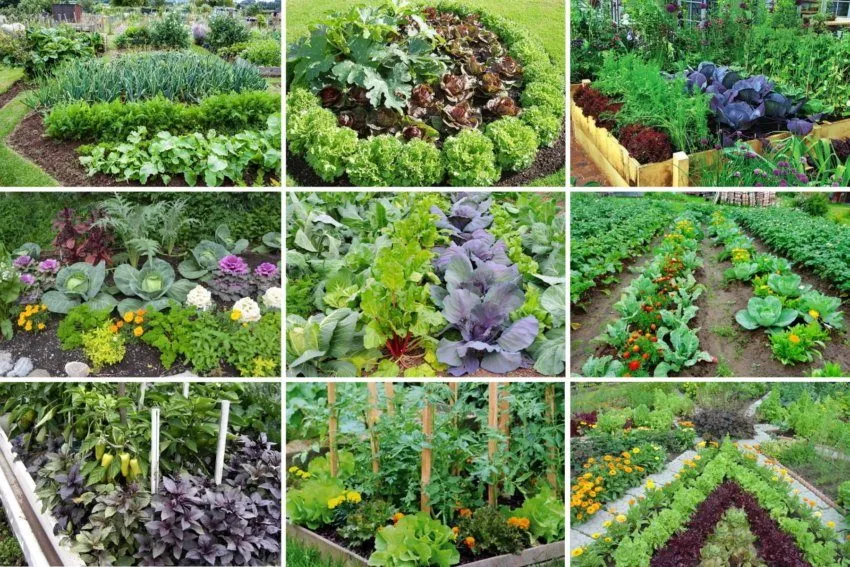Good neighbors
When planting vegetable and garden crops, it is necessary take into account the compatibility of plants. A well-chosen neighborhood is favorable It affects plant growth, increases productivity, repels pests, protects against diseases. On this page you can find out which plants are good neighbors and are ideal for growing in the same garden, which are negative they affect the growth of other vegetables and depress them.
Click on the card of interest plants and information will appear in front of you:
Short description plants.
Good neighbors – vegetables, herbs, herbs, flowers that enrich the soil, help each other it grows well, has a beneficial effect on yield, improves the taste of fruits, they scare off and protect each other from pests, attract useful ones insects.
Bad Neighbors – those plants that oppress each other have a bad effect on the harvest, other plants suppress their powerful growth. If next to each other on the same bed moisture-loving crops and drought-resistant ones are planted, then the latter suffer from diseases and fungi caused by waterlogging of the soil.
Predecessors – plants that grew in the beds last season. To receive a high yield of vegetables should be followed by crop rotation - do not grow the same vegetables for several years in the same garden, but swap them. Good the precursors are those plants that enrich the soil with useful fertilizers, they increase soil fertility, expel and destroy pests, and suppress the growth of pathogenic bacteria.
Notes - some tips or notes about the plant / its cultivation.
When you click on the card again, the information will disappear from the screen.
Description and Tips
What is plant compatibility?
Plant Compatibility is the harmony between those planted side by side cultures, and it is achieved at the chemical level. The fact is that certain plants emit various substances into the environment (into the air, soil) organic substances: colins, phytoncides, etc. These substances can affect the growth and development of other plants both negatively and positively. Wider and the scientific name of this phenomenon – allelopathy .
Consider the main groups of substances responsible for allelopathy:
Colins
Colins are secreted by plants and affect other plants by suppressing them vital activity. For example, such a colorless gas as ethylene (emitted by for example, apple fruits) – inhibits seed germination, growth and development of sprouts, it also leads to yellowing and premature leaf fall, and even death neighboring plants.
This is relevant only when colins are released in high concentrations. Microdoses, on the contrary, stimulate the growth of neighboring plants. But too much A high concentration of colins is dangerous even for plants that secrete them.
In addition, the released substances accumulate in the soil and gradually create an allelopathic environment that has a beneficial effect on some plants, and depresses other. Therefore, it is also so important to observe the crop rotation .
Phytoncides
Phytoncides have a detrimental effect on bacteria, protozoa and fungi. So the substances, secreted by linden and birch trees, inhibit the development of harmful microorganisms and improve the growth of neighboring plants. Therefore, these types of trees are recommended plant along the boundaries of the garden plot. This will help protect the orchard from fungal diseases carried by the wind from the diseased trees of the neighbors in the country the site.
As for garden plants, the phytoncides of garlic, onion and horseradish kill many types of pathogenic microorganisms and fungi, as well as repel insects. For example, the neighborhood of onions is useful for lettuce, because its phytoncides they scare away aphids.
Why is it important do you follow the rules of compatibility of plantings?
Some crops secrete useful substances for neighbors growing nearby, others they release harmful compounds and impoverish the soil, preventing it from fully developing another crop that grows nearby. That's why it's so important to follow the rules compatibility of landings.
The correct selection of companion plants allows you to:
- increase the amount of harvest;
Growing tomatoes together with basil at a distance of about 25 cm apart can increase tomato yield by about 20%. And cumin planted next to strawberries helps to grow faster and more sweet berries.
- avoid soil fatigue;
- protect against diseases and enhance the immunity of neighboring plants;
For example, horseradish increases potato resistance to diseases, and garlic is more effective than fungicides against late blight potatoes.
- prevent the growth of unwanted weeds;
- improve the taste and appearance of fruits;
Radishes grown with lettuce leaves are tastier. And the peas and beans give spinach a natural shade.
- increase the resistance of a perennial plant to frost;
- pest control without the use of chemicals;
Personal experience has shown that peas planted next to potatoes, reduces the size of the army of Colorado potato beetles.
- economically use the territory of the garden and vegetable garden.
However, even with the right neighborhood, grow a strong and healthy the plant will not succeed without observing the techniques of agricultural technology. When boarding, you should consider everything in the complex:
- plant compatibility and crop rotation;
- the need for moisture and sun (some plants are shade–tolerant, others are light- loving);
- soil composition and the effect of applied fertilizers on it (some of them acidify the soil, others – snap).
It is advisable to select crops with the same requirements for conditions growth. But planting a culture that prefers acidic soil next to that A culture that needs a neutral one should create a borderline value pH .
| Culture | Moisture requirement | Soil | Predecessors | Successful neighbors | Unwanted neighbors |
|---|---|---|---|---|---|
| White cabbage | High, but with waterlogging, the roots rot | Neutral, fertile, with good permeability | For early varieties - cucumber, onion, tomato; for late varieties - potatoes, root vegetables, legumes | Potato, tomato, cucumber, lettuce, beetroot | Radish, watercress, mustard leaf |
| Potatoes | Moderate, maximum - from budding to the end of the growth of the tops. It reacts negatively even to short-term soil fatigue | Slightly acidic, light, loose, cultivated, with a moderate nitrogen content and an optimal amount of phosphorus and potassium | Legumes, cabbage, radish, cucumber, zucchini | Beans, cabbage, onion, garlic, beans, radish, radish, lettuce | Tomato, pepper, eggplant |
| Carrots | Moderate, but a uniform and uninterrupted supply of moisture is necessary | Neutral, light loamy or sandy loam, loose, high in humus, permeable | Cabbage, cucumber, tomato, early potatoes | Peas, onion, cucumber, radish, lettuce, parsley, beetroot | Dill, fennel, cabbage |
| Beetroot | Moderate, maximum - during seed germination; without interruptions - during root crop formation | Neutral, loose, well-drained, rich in organic matter | Early potatoes, cucumber, cabbage | Cabbage, onion, garlic, carrot, cucumber, lettuce | Mustard, potatoes, beans |
| Onion | High, regular watering is necessary in dry weather | Neutral, light loamy or sandy loam, rich in humus | Cabbage, cucumber, tomato, early potatoes | Carrots, beets, lettuce, cucumber, tomato | Peas, beans, cabbage, radishes |
| Garlic | High, stops growing when there is a lack of moisture, forms a small bulb | Neutral, light loamy or sandy loam, fertile | Early cabbage, cucumber, squash, pumpkin | Carrot, cucumber, parsley, lettuce, tomato | Beans, peas, beans, cabbage |
| Cucumber | High, highest - during the fruiting period | Neutral, loose, fertile, with a large supply of organic substances | Early cabbage, tomato, potato, legumes | Peas, cabbage, onions, carrots, lettuce, dill | Potatoes, radishes, tomatoes |
| Zucchini, zucchini | Moderate, but watering increases the yield, zucchini is more demanding of moisture | Neutral, fertile, well permeable | Potatoes, cabbage, onions, root vegetables, legumes, onions | Onion, beetroot, tomato | No |
| Tomato | Moderate, relatively resistant to drought; undesirable proximity of groundwater | Neutral, light, fertile soils are preferred | Cucumber, cabbage, onion, green crops, legumes | Cabbage, onion, garlic, parsley, radish, beans | Potatoes, cucumber, peas |
| Lettuce | High | Neutral, loose, with high humus content | Cabbage, potatoes | Cabbage, onion, carrot, beetroot, radish, tomato | No |
| Radish | High | Neutral or slightly acidic, light, fertile | Cucumber, early potatoes, green crops | Cabbage, carrots, lettuce, tomato, beans, spinach | Onion, cucumber |
| Dill | Moderate, but with a lack of leaves, they become smaller and coarser | Neutral, loose, fertile | Cucumber, cabbage, beetroot, legumes | Lettuce, cucumber, cabbage | Carrots |
| Parsley | Moderate | Neutral, fertile, light loamy or sandy loam | Cucumber, tomato, onion | Onion, cucumber, tomato, beans | Salad |
| Beans | High, maximum - during seed germination and during flowering; does not tolerate close standing of groundwater | Slightly acidified or neutral, light, well warmed, neutral | Cucumber, cabbage, onion, potato | Peas, cabbage, carrots, nightshade | Onion, garlic, fennel, pumpkin |
| Peas | High, can withstand excess moisture, but does not tolerate close standing of groundwater | Neutral, deeply processed, loose, fertile | Potatoes, tomatoes, cabbage, pumpkin crops | Cabbage, carrots, potatoes, lettuce, spinach | Onion, garlic, tomato, beans, zucchini |
Compatibility table vegetables among themselves
Below is a table of popular garden plants with exact compatibility Between crops:
| Plant name | Which cultures are favorable compatibility | Incompatible plants |
| Watermelon | Potatoes | Horseradish, cabbage, tomatoes |
| Eggplant | Beans, tomatoes, lettuce, pepper, watermelon | Cucumbers, garlic, onions |
| Peas | Parsley, kohlrabi, spinach, lettuce, radish, radish, cucumbers, carrots, corn, watercress, eggplant, potatoes | Garlic, beans, celery, zucchini, onion, fennel, tomatoes |
| Melon | Radish, tomatoes, beans, corn | Cabbage, cucumbers, potatoes |
| White cabbage | Spinach, corn, beetroot, dill, celery, onion, potatoes | Grapes, sweet peppers, beans |
| Potatoes | Coriander, cauliflower, broccoli, kohlrabi, red cabbage, dill, horseradish, onion, garlic, spinach, watermelon, corn, radishes, beans, beans and peas | Apple tree, raspberries, cucumbers, pumpkin, tomatoes, fennel, sorrel, sunflowers, cherry, beetroot |
| Corn | Beans, melons and watermelons, peas, zucchini, pumpkins, cucumbers, potatoes, cabbage, salad, beans | Onion, celery, fennel, beetroot |
| Onion | Garlic, brussels sprouts, broccoli, kohlrabi, beetroot, carrots, celery, spinach, strawberries and strawberries, eggplant, cucumbers, tomatoes | Beans, beans, peas |
| Carrots | Onion, garlic, onion, lettuce, parsley, spinach, marjoram, tomatoes, peas, beans | Fennel, horseradish, celery, chard, parsley, dill, beetroot |
| Cucumber | Peas, beans, beans, lettuce, celery, dill, carrots, beetroot, radish, cabbage, kohlrabi, onion, garlic, sunflower, corn | Potatoes and tomatoes, radishes |
| Sweet pepper | Garlic, basil, onion, coriander, lettuce, eggplant | Hot pepper, cabbage, beans |
| Tomatoes | Garlic, radishes, carrots, onions, basil, spinach, parsley, cabbage | Fennel, dill, kohlrabi, peas, beets, potatoes |
| Parsley | Zucchini, basil, asparagus, watercress, dill, garlic, onion, peas and pumpkin, tomatoes | Sorrel and lettuce |
| Radish | Lettuce, watercress, spinach, dill, basil, carrots, beets, tomatoes, pumpkin, parsley, onion and garlic, beans | Chard, cucumbers, grapes |
| Lettuce | Kohlrabi, cabbage, beetroot, rhubarb, cucumbers, radishes, peas, onions, corn | Beans, parsley, pumpkin and tomatoes |
| Beetroot | Onions, cabbage, lettuce, zucchini, lettuce, radishes and radishes, garlic, cucumbers | Fennel, potatoes, tomatoes, mustard, corn |
| Pumpkin | Corn, onion, lettuce, radish, beans | Potatoes and cabbage |
| Dill | Radishes, turnips, beets, cabbage, zucchini, garlic, cucumbers, beans, peas, fennel | Basil and carrots, tomatoes |
| Beans | Celery, melon, cabbage, radishes, strawberries and strawberries, carrots, beets, corn | Fennel, all kinds of onions, pumpkin, garlic, pepper |
| Garlic | Currants, cucumbers, beets, strawberries and strawberries, lettuce, parsley, carrots, tomatoes, onions | Beans, eggplant, potatoes, peas, cabbage, beans, grapes |
| Spinach | Cucumbers, strawberries, lettuce, cabbage, radishes, turnips, radishes, carrots | Fennel, tomatoes, beans and pumpkin |
| Sorrel | Melissa, strawberries, mint, asparagus, cabbage, radish, carrots and potatoes | Beans, peas, beans, basil, parsley and tomatoes |
Table compatibility of fruit trees and shrubs
Compatibility in the garden is also important. If trees and shrubs are planted in a chaotic in order, without observing the neighborhood, then some plants may get sick and even to die. For example, a walnut planted in the garden has a negative effect on everything other plants. It slows down their growth and has a bad effect on the taste of fruits.
To eliminate incompatibility, check out what you can and cannot plant Seedlings:
- Cherry. Grows well next to cherries, plums and grapes. Bad neighbors are pears, some apple trees and currants. Also the tree is bad it grows with garden representatives: strawberries, tomatoes and peppers. Nightshades can infect cherries with wilt.
- Pear. Other varieties of pears are well suited for her neighbors. Comfortable with mountain ash. The apple tree does not fit (although the apple tree itself is pear the neighborhood is favorable).
- Currant.
Two of its types – red and black, are not suitable for
a joint landing next to each other. The latter likes well-hydrated
soil and shady areas. The red one prefers drier ground and warmed-up
sunny areas.
Currants and gooseberries get along well, but plant it is not recommended to have them nearby because of the same type of diseases. - Blackberries. Grows well with raspberries (can be carried out the same treatment and fertilize the soil). Plants do not pollinate each other. Blackberries are combined with gooseberries. And currants and fruit trees are incompatible neighbors.
These were the most popular combinations in which gardeners often make mistakes. We have provided more examples in the table below.
| Fruit trees and shrubs | Favorable compatibility landings | Don't fit in the neighborhood |
| Apricot | Any varieties of apricot, plum, pear, peach, plum, cherry, dogwood, blueberries, hazelnuts | Apple and cherry |
| Quince | Apple, pear, hawthorn | Viburnum, cherry |
| Cherry plum | All varieties of cherry plum, mulberry, blueberry, apple, plum, cherry, peach, cherries, hazelnuts, dogwood | Pear only |
| Hawthorn | Cherries and cherries | Apple tree |
| Grapes | Pear, cherry and cherry | Apple and pear tree creates shade |
| Blueberries | Cranberries, currants, raspberries | Apple tree, sea buckthorn, apricots, pear |
| Pear | Cherry, cherry, cherry plum, blueberry, hazelnut, dogwood, rowan | Peach, plum, apple, apricot |
| Honeysuckle | Gooseberry, plum, currant, grape, cherry, quince, hawthorn, rosehip, juniper | Raspberry, apple, blueberry, pear, apricot, blackberry, cherry, mountain ash, nut |
| Irga | Raspberries, black currants, gooseberries | Apple tree, walnut |
| Kalina | Lilac, mountain ash | Apple tree, chokeberry, cherry, spruce |
| Dogwood | Cherry, apple, cherry, plum, peach, blueberry, hazelnut | Pear, sea buckthorn |
| Raspberry | Apple, pear, plum, blackberry, red elder, rowan | Strawberries, grapes, currants, sea buckthorn, elderberry |
| Sea buckthorn | All varieties of sea buckthorn of the opposite sex (for pollination) | Currants, raspberries and more, as sea buckthorn strongly depresses all trees and shrubs |
| Peach | Does not like the neighborhood with other cultures | Cherry, cherry, apricot, pear, apple, walnut |
| Mountain Ash | Viburnum, pear | Apple tree, cherry |
| Plum | Cherries, cherries, black currants | Pear and apple tree, apricot, walnut trees |
| Red currant | Apple tree, peach, cherry, rosehip | Black currant, honeysuckle, raspberry, walnut |
| Black currant | Golden currant, plum | Hazel |
| White currant | Cherry, red currant | Raspberries, black currants |
| Golden currant | Black currant, plum, honeysuckle | Hazel |
| Mulberry (mulberry) | Only other mulberry varieties are favorable | Depresses all trees and shrubs |
| Hazelnuts | Raspberry, old apple tree, hazelnut | Depresses almost all trees and shrubs |
| Cherries | All varieties of cherries, cherries, blueberries, dogwood, sea buckthorn | Plum, pear, plum, apple, peach and apricot |
| Apple tree | Raspberries, grapes, other varieties of apple, plum, honeysuckle | Cherry, peach, plum, elderberry, rowan, walnut |
How to organize correctly joint planting?
Joint planting is when a bed is taken and many different plants are planted on it cultures that complement each other. To do this, a preliminary plan is drawn up with an indication of the selected companion plants.
What recommendations should be followed when assembling a joint bed:
- Make the width of the bed with a margin. It must be at least one meter long. The length is 3-4 m.
- Take into account the crop rotation. Plant plants that were previously (in the past season) did not grow on a specific piece of land.
- Alternate plants with different root systems in the garden (underdeveloped root &8212; big root).
- Place more precocious crops on the edges of the bed (more often to those include greens, herbs, strawberries).
- Pay attention to the requirements for the care of plants. All planted nearby the instances should be equally moistened and have similar requirements for lighting and suitable for a specific acidic soil environment.
Examples of successful collaborations landings
To make mixed plantings correctly, check out the compatibility of those or other crops and pay attention to the illustrative examples and schemes of crops.
There are 4 ways of planting plants together:
- Simple. Several similar ones are planted in agricultural technology cultures. Identical in terms of maturation and care.
- Alternate. Plants are not planted together, just the alternation of terms is taken into account. 2 different crops are grown on one place in different magpies.
- Advanced. Even before harvesting the first crop, in place A new crop is being planted, gradually replacing the first one.
- Intensive. Together they grow crops that they have a positive effect on each other: they protect against pests, improve taste and volume and strengthens the immune system.
What options are successfully used by gardeners:
- Eggplant next to pepper. Good neighbors in the garden. Crops have similar agricultural techniques. But it is better to plant sweet peppers, otherwise they can transfer the bitterness to eggplants.
- Pepper next to cucumbers . A favorable combination. Cucumbers they are planted in the center of the bed, and the peppers are on the edges. More often in the greenhouse.
- Watermelon and melon. Acceptable neighborhood. Similar agricultural machinery. But, because of the overgrowth, it is advisable to plant away.
- Carrots next to garlic. Such a successful landing will protect carrots are for pests, and garlic is for scab.
- Carrots next to onions. Can be planted side by side and even together. They protect each other from pests.
- Onions next to strawberries. It is acceptable to plant together, since the meadow protects the berry from rotting.
- Dill and cucumber. Both cultures feel comfortable.
- Radish and garlic. Protects the "first" from the cruciferous flea and it slightly shades the radish so that it does not start growing ahead of time.
Which crops should not be combined in one bed:
- Onions next to garlic. Similar plants can compete among themselves. More often, garlic is dominant.
- Tomatoes and cucumbers are nearby. They have different characteristics agrotechnical conditions. Cucumbers like frequent watering and a lot of sun, not they tolerate drafts, and tomatoes like fresh air and lack of sun.
- Tomatoes and peppers are nearby. Crops are considered nightshade and they can easily infect each other if one of them gets sick.
- Zucchini next to pumpkin. Will oppress each other. Finally both crops will not receive the required amount of nutrients. Recommended plant at a distance of at least 4 meters from each other.
Mixed planting schemes:
Is it possible to plant different plants side by side varieties?
It is most often allowed to plant different varieties of the same crop side by side. Consider Several plants:
- Strawberries. Despite the myth of the prohibition of growing on one the location of different varieties of this berry – varieties are allowed on the same bed. There will be no interbreeding and pollination between each other.
- Grapes. Different varieties on the same plantation are very welcome. They pollinate among themselves, improving yields. The taste grades are not affected. It is only important to plant varieties with the same height in order to one variety did not shade the other.
- Raspberry. It can also grow mixed up. The berry will not hatch and it will not lose its varietal characteristics.
Which plants should not be planted nearby?
There are some pairs of plants that are not recommended to be planted not only together, but also next to the beds. These include:
- Peas and onions. The second inhibits the development of peas.
- Potatoes and tomatoes. Both are nightshade. They have the same diseases and are susceptible to pests.
- Carrots and dill. There are more rumors than facts, however gardeners claim that grass prevents carrots from growing.
- Cabbage and grapes. The taste of berries is spoiling.
At what distance from each other can incompatible crops be planted?
The average distance for incompatible garden crops is 4-6 m. For incompatible trees and shrubs – from 10 m to the opposite corner of the plot (as far as possible).
Ideally, in case of incompatibility of crops, if the site is small (especially if it is garden), it is better to abandon such a planting.
Neighbors in the garden, which can repel insects
There are plants that effectively fight pests, improving quality harvest.
List of pests in the garden and their "repellent":
- Carrot fly. Onions are suitable for destruction, sage, garlic and radishes.
- Slugs with snails. Bitter wormwood, parsley, mint and sage.
- Aphids. Coriander, mint, marigold flowers, mustard will bring it out, nasturtium and onion.
- Colorado potato beetle. Sage, thyme, tansy helps with it, coriander, capuchin, flax, beans and thyme soap.
- Nematode. Prevention with chicory, marigolds and Marigolds.
- Cabbage caterpillars. Mint, basil, wormwood, nasturtium and tansy.
How are they affected weeds for compatibility of plantings in the garden?
Weeds in some cases have beneficial properties. For example:
- Dandelions - calcium is extracted from the soil.
- Bean weeds - remove excess phosphorus.
- Quinoa - improves the quality of potatoes and corn.
Do all plants love the neighborhood with siderates?
Siderates are helper plants involved in improving soil quality. They are grown so that in the next cycle the subsequent planting of crops will be strong, delicious. They protect the soil from weeds, contain some diseases and pests.
Siderates can be planted next to plants, but there are nuances in which they are considered bad neighbors. These include:
- Potatoes. It is not planted next to rye, as it is a siderate lures the wireworm, which is harmful to potatoes.
- Strawberries and tomatoes. Rapeseed is not suitable for them in the neighborhood, so how he breeds nematodes.
- Radishes and cabbage. Grow poorly with mustard. She is attracted to imagine a cruciferous flea.
Plant compatibility is a delicate process that requires careful study topics to properly plan your site for planting. This saves a lot of money space and ecology in terms of reducing (or even eliminating) chemical culture processing due to their "offsetting" among themselves.












